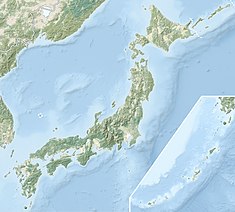단위근
Unit root확률 이론과 통계에서 단위 루트는 시계열 모델을 포함하는 통계 추론에서 문제를 일으킬 수 있는 일부 확률적 프로세스(임의의 보행 등)의 특징이다. 1이 공정 특성 방정식의 뿌리인 경우 선형 확률적 공정은 단위 뿌리를 가지고 있다. 그러한 과정은 역학적으로 진행되지는 않지만 항상 추세가 있는 것은 아니다.
특성 방정식의 다른 뿌리가 단위 원 안에 있는 경우(즉, 계량(절대 값)이 1보다 작은 경우) 공정의 첫 번째 차이는 정지하고, 그렇지 않은 경우 공정이 정지되기 위해서는 여러 번 차이를 두어야 한다.[1] d 단위 루트가 있는 경우 공정이 정지하기 위해서는 d번의 차이를 두어야 한다.[2] 이러한 특성 때문에 단위근처 공정을 차이정지라고 부르기도 한다.[3][4]
단위 루트 프로세스는 때때로 추세 역학 프로세스와 혼동될 수 있다. 그러나 그것들은 많은 특성을 공유하지만, 많은 면에서 다르다. 시계열은 비스테이션적이지만 단위 루트가 없고 추세 스테이션이 될 수 있다. 단위 루트 프로세스와 추세 스테이션 프로세스 모두에서 평균은 시간에 따라 증가하거나 감소할 수 있지만, 추세 스테이션 프로세스는 평균 반복(즉, 일시적, 시간 시리즈는 감전의 영향을 받지 않은 증가 평균으로 다시 수렴할 것이다) 반면 단위 루트 프로세스는 영구적인 영향을 미친다. 평균에 대해(즉, 시간에 따른 수렴 없음)[5]
공정의 특성 방정식의 뿌리가 1보다 크면, 그러한 과정을 단위뿌리 과정이라고 부정확하게 부르기도 하지만 폭발적 과정이라고 한다.
단위 루트의 존재는 단위 루트 테스트를 사용하여 테스트할 수 있다.
Definition
Consider a discrete-time stochastic process , and suppose that it can be written as an autoregressive process of order p:
Here, is a serially uncorrelated, zero-mean stochastic process with constant variance . For convenience, assume . If is a root of the characteristic equation, of multiplicity 1:
then the stochastic process has a unit root or, alternatively, is integrated of order one, denoted . If m = 1 is a root of multiplicity r, then the stochastic process is integrated of order r, denoted I(r).
Example
The first order autoregressive model, , has a unit root when . In this example, the characteristic equation is . The root of the equation is .
공정에 단위 루트가 있는 경우, 이는 비역렬 시계열이다. 즉, 확률적 프로세스의 순간은 t 에 따라 달라진다 단위 루트의 효과를 설명하기 위해 y0 = 0:부터 시작하는 첫 번째 오더 케이스를 고려할 수 있다.
반복적인 으로 t= + j= j 라고 쓸 수 있다. 다음 y 의 분산을 다음과 같이 제공한다.
The variance depends on t since , while . Note that the variance of the series is diverging to infinity with t.
단위 루트의 존재 여부를 확인하기 위한 다양한 테스트가 있으며, 그 중 일부는 다음과 같은 방법으로 주어진다.
- DF(Dickey-Fuller) 또는 ADF(Advanced Dickey-Fuller) 테스트
- 둘 이상의 계수의 유의성 검정(f-검정)
- 필립스-페론 테스트(PP)
- Dickey Pantula test
Related models
In addition to autoregressive (AR) and autoregressive–moving-average (ARMA) models, other important models arise in regression analysis where the model errors may themselves have a time series structure and thus may need to be modelled by an AR or ARMA process that may have a unit root, as discussed above. The finite sample properties of regression models with first order ARMA errors, including unit roots, have been analyzed.[6][7]
Estimation when a unit root may be present
Often, ordinary least squares (OLS) is used to estimate the slope coefficients of the autoregressive model. Use of OLS relies on the stochastic process being stationary. When the stochastic process is non-stationary, the use of OLS can produce invalid estimates. Granger and Newbold called such estimates 'spurious regression' results:[8] high R2 values and high t-ratios yielding results with no economic meaning.
To estimate the slope coefficients, one should first conduct a unit root test, whose null hypothesis is that a unit root is present. If that hypothesis is rejected, one can use OLS. However, if the presence of a unit root is not rejected, then one should apply the difference operator to the series. If another unit root test shows the differenced time series to be stationary, OLS can then be applied to this series to estimate the slope coefficients.
For example, in the AR(1) case, is stationary.
In the AR(2) case, can be written as where L is a lag operator that decreases the time index of a variable by one period: . If , the model has a unit root and we can define ; then
< } <1 OLS를 사용하여 기울기 계수 }를 추정할 수 있다면 정지되어 있다
공정에 여러 개의 단위 루트가 있는 경우 차이 연산자를 여러 번 적용할 수 있다.
단위 루트 프로세스의 속성 및 특성
- 단위 루트 프로세스에 대한 충격은 프로세스가 정지해 있을 때처럼 영구적인 영향을 미치지 않는다.
- 위에서 언급한 바와 같이 단위 루트 프로세스는 t에 의존하는 분산을 가지며 무한대로 분산된다.
- 시리즈에 단위 루트가 있는 것으로 알려진 경우 시리즈를 차등화하여 정지 상태로 만들 수 있다. 예를 들어 영상 시리즈 가 I(1)인 경우 영상 시리즈 = - - 1 는 I(0)(역주)이다. 그래서 차이 고정 직렬이라고 불린다.[citation needed]
단위근원 가설
경제학자들은 다양한 경제 통계, 특히 산출물이 단위 뿌리를 가지고 있는지 아니면 유행을 선도하는지에 대해 토론한다.[9] 표류를 갖는 단위 루트 프로세스는 1차 사례에서 다음과 같이 제시된다.
여기서 c는 "}}라는 상수 항이며 e t {\displaystyle e_{t는 백색 소음이다. 한 기간 동안만 발생하는 소음 항의 0이 아닌 값은 그래프에 나타난 바와 y {\의 값에 영구적으로 영향을 미치기 에 =+ t 선으로부터의 편차는 정지하지 않으며 추세선으로의 회귀는 없다. 이와는 대조적으로, 추세 역학 프로세스는 다음에 의해 주어진다.
여기서 k는 추세의 기울기이고 t 는 노이즈(가장 단순한 경우 백색 노이즈, 더 일반적으로는 자체의 고정된 자기 회귀 프로세스에 따른 노이즈)이다. 여기서 어떤 과도적 노이즈도 그래프에서도 볼 수 있듯이 가 추세선에 있는 롱런 경향을 변경하지 않는다. 이 공정은 추세선으로부터의 편차가 정지해 있기 때문에 추세선 역학이라고 한다.
그 이슈는 특히 비즈니스 사이클에 관한 문헌에서 인기가 있다.[10][11] 이 주제에 대한 연구는 GNP와 다른 생산량 집계에 관한 논문이 이 시리즈에 대한 단위근의 가설을 거부하는데 실패한 넬슨과 플로서로부터 시작되었다.[12] 그 이후, 통계적 방법에 관한 기술적 논쟁과 함께 토론이 이어졌다. 일부 경제학자들은[13] GDP가 단위 뿌리나 구조적인 붕괴를 가지고 있다고 주장하면서, 경기 침체로 인해 장기적으로 GDP 수준이 영구적으로 낮아지는 결과를 초래한다고 암시한다. 다른 경제학자들은 GDP가 유행을 선도한다고 주장한다. 즉, GDP가 침체기에 추세를 밑돌 때 추세가 내포하는 수준으로 떨어져서 영구적인 생산량 감소가 일어나지 않도록 한다. 단위 뿌리 가설에 관한 문헌은 통계적 방법에 대한 불가사의한 논쟁으로 구성될 수 있지만, 그 가설은 경제 예측과 정책에 대한 상당한 실질적인 시사점을 담고 있다.
참고 항목
- Dickey-Fuller 검정
- 증강된 Dickey-Fuller 테스트
- ADF-GLS 검정
- 단위 루트 테스트
- 필립스-페론 테스트
- 단위 루트를 갖는 두 변수 사이의 관계를 결정하는 공동 통합
- 가중 대칭 단위 루트 테스트(WS)
- Kwiatkowski, Phillips, Schmidt, Shin test, KPSS 테스트로 알려져 있음
메모들
- ^ "Trend-Stationary vs. Difference-Stationary Processes - MATLAB & Simulink". uk.mathworks.com. Retrieved 2016-06-05.
- ^ "EViews Help".
- ^ "Differencing and unit root tests" (PDF).
- ^ "Non-Stationary Series" (PDF).
- ^ Heino Bohn Nielsen. "Non-Stationary Time Series and Unit Root Tests" (PDF).
- ^ Sargan, J. D.; Bhargava, Alok (1983). "Testing residuals from least squares regressions for being generated by the Gaussian random walk". Econometrica. 51 (1): 153–174. doi:10.2307/1912252. JSTOR 1912252.
- ^ Sargan, J. D.; Bhargava, Alok (1983). "Maximum Likelihood Estimation of Regression Models with First Order Moving Average Errors when the Root Lies on the Unit Circle". Econometrica. 51 (3): 799–820. doi:10.2307/1912159. JSTOR 1912159.
- ^ Granger, C. W. J.; Newbold, P. (1974). "Spurious regressions in econometrics". Journal of Econometrics. 2 (2): 111–120. CiteSeerX 10.1.1.353.2946. doi:10.1016/0304-4076(74)90034-7.
- ^ Krugman, Paul (March 3, 2009). "Roots of evil (wonkish)". The New York Times.
- ^ Hegwood, Natalie; Papell, David H. (2007). "Are Real GDP Levels Trend, Difference, or Regime-Wise Trend Stationary? Evidence from Panel Data Tests Incorporating Structural Change" (PDF). Southern Economic Journal. 74 (1): 104–113. doi:10.1002/j.2325-8012.2007.tb00829.x. JSTOR 20111955.
- ^ Lucke, Bernd (2005). "Is Germany's GDP trend-stationary? A measurement-with-theory approach" (PDF). Jahrbücher für Nationalökonomie und Statistik. 225 (1): 60–76. doi:10.1515/jbnst-2005-0105. S2CID 209856533.
- ^ Nelson, Charles R.; Plosser, Charles I. (1982). "Trends and Random Walks in Macroeconomic Time Series: Some Evidence and Implications". Journal of Monetary Economics. 10 (2): 139–162. doi:10.1016/0304-3932(82)90012-5.
- ^ 올리비에 블랜차드 국제통화기금(IMF)은 은행 위기 이후 "평균적으로 생산량은 예전 추세대로 돌아가지 않고 영구적으로 그 아래를 유지한다"고 주장한다.




























 I(0)(역주)이다. 그래서 차이 고정 직렬이라고 불린다.[
I(0)(역주)이다. 그래서 차이 고정 직렬이라고 불린다.[




 노이즈(가장 단순한 경우 백색 노이즈, 더 일반적으로는 자체의 고정된 자기 회귀 프로세스에 따른 노이즈)이다. 여기서 어떤 과도적 노이즈도 그래프에서도 볼 수 있듯이
노이즈(가장 단순한 경우 백색 노이즈, 더 일반적으로는 자체의 고정된 자기 회귀 프로세스에 따른 노이즈)이다. 여기서 어떤 과도적 노이즈도 그래프에서도 볼 수 있듯이 

